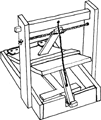Vertebrate Pest Conference Proceedings collection
Date of this Version
March 1992
Document Type
Article
Abstract
The anticoagulant rodenticides were discovered in the 1940s and their advantages of efficacy and safety quickly resulted in their use dominating the practice of rodent control in temperate countries. However, the development of resistance to the early compounds within a decade stimulated research culminating in the invention of anew class of anticoagulant, the second generation compounds, active against resistant strains but also overall far more potent than those previously available. A novel baiting strategy, pulsed baiting, was developed to make full use of this valuable characteristic. Pulsed baiting has enabled the use of second generation anticoagulants in situations where early products were of limited value, particularly in tropical agriculture. The future of this highly-successful group of compounds is reviewed in relation to resistance and the difficulty and cost of developing further rodenticides.

